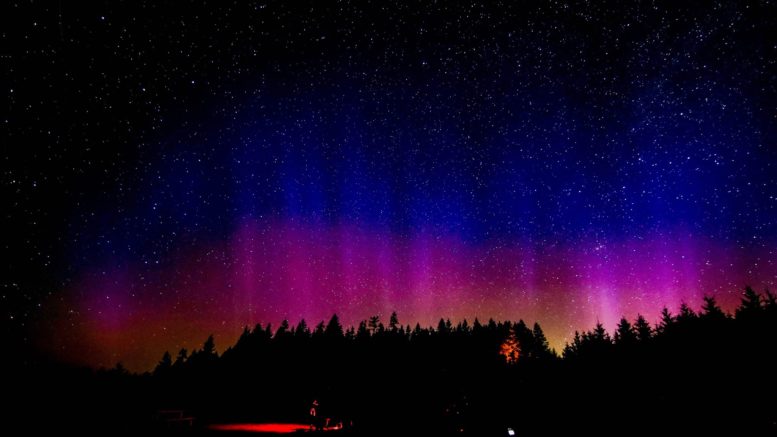The technical definition of space weather can be said to be a branch of space physics and aeronomy concerned with the time varying conditions within the Solar System. It is worth noting that these features are distinct from but conceptually related to the terrestrial weather of the Earth’s atmosphere.
A great summary of space weather phenomena can be found on the NOAA/NWS site, which says, “Space Weather describes the variations in the space environment between the sun and Earth. In particular Space Weather describes the phenomena that impact systems and technologies in orbit and on Earth. Space weather can occur anywhere from the surface of the sun to the surface of Earth. As a space weather storm leaves the sun, it passes through the corona and into the solar wind. When it reaches Earth, it energizes Earth’s magnetosphere and accelerates electrons and protons down to Earth’s magnetic field lines where they collide with the atmosphere and ionosphere, particularly at high latitudes. Each component of space weather impacts a different technology.”[1]
Therefore, the most common space weather that the Earth and the inhabitants would experience would be events such as the aurora borealis. The Aurora Borealis and other space weather can indeed cause problems to a plethora of earth and space based technology and life.
Effects
The effect on spacecraft manifests itself in the forms of electronics and orbital changes. The most common adverse space weather effects on spacecraft are radiation damage and spacecraft charging. Radiation damage to satellites occur when the solar weather radiation passes through the skin of the spacecraft and into the electronic components. This radiation can cause the electronics to erroneously signal or change memory. Spacecraft charging is the accumulation of an electrostatic charge on a non-conducting material on the spacecraft’s surface by low energy particles. If enough charge is built up, a discharge (spark) occurs. This can cause an erroneous signal to be detected and acted on by the spacecraft computer.
There are instances in which space weather can be of worry to humans in space and those in commercial aviation. For those humans in space that are exposed, the resulting ionizing radiation would have the same harmful effects whether the source of the radiation is a medical X-ray machine, a nuclear power plant or radiation in space. The degree of the harmful effect depends on the length of exposure and the radiation’s energy density. Moreover, for those in commercial aviation, extreme radiation bursts that penetrate the atmosphere can cause the radiation levels to increase above safe levels in certain areas of the planet. This typically manifests itself in the polar regions, but when this happens, aviation routes would need to be re-routed to avoid the increased exposure.
There are some effects in regards to ground systems, which can include long distance radio and spacecraft signals. This is a result of the radiation affecting the applicable waves used to send the signal. These distortions prevent the signals from reaching their destinations with the data preserved and can seriously affect how technology functions and reply to commands.
Geophysics is not immune to these effects as well as a result of their reliance on magnetic fields when performing magnetic surveys. These magnetic surveys, when conducted via ship or airplane, can see their magnetic field data rapidly change during geomagnetic storms. Such fluctuations are crucial as they mean the difference between a successful survey and inconsistent data.
Observation
Space weather is monitored at ground level by observing changes in the Earth’s magnetic field over periods of seconds to days, by observing the surface of the Sun and by observing radio noise created in the Sun’s atmosphere. This is done by examining several different features including the number of sunspots, magnetic activity from the sun, and neutrons.
There are a network of satellites in orbit that are used by scientists to help detect and determine the risks posed by solar weather in real time.
An example of space weather that has been seen in the Pacific Northwest is the Aurora Borealis, which has more information provided here.

Be the first to comment on "Space Weather: An Introduction"